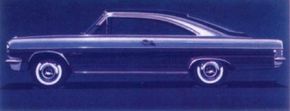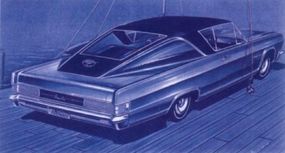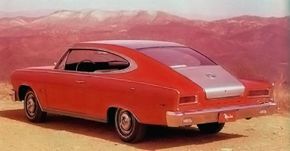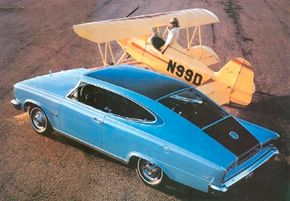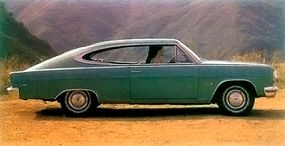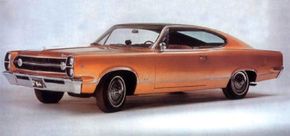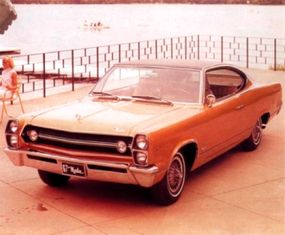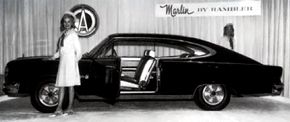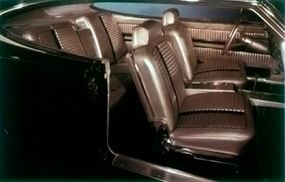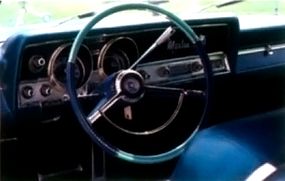Because of the popularity AMC enjoyed during the late 1950s and early 1960s, the company decided to broaden its lineup and compete more directly with the Big Three automakers. Thus, the 1965-1967 AMC Marlin fastback was developed. The following pages explain the AMC Marlin story.
Advertisement
It was the first day after the election of Roy Abernethy as president of American Motors. George Romney, who had gained fame at the helm of AMC for taking on the "gas-guzzling dinosaurs" of the Big Three with the compact Rambler, had just departed to take on the job of governing the State of Michigan. Responding to the change in leadership, a Kenosha, Wisconsin, radio station asked for a taped comment from Abernethy about the new challenges he was facing. During the interview, Abernethy made it clear that he wanted to get rid of Romney's image of AMC.
Abernethy came to Nash Motors in 1954 from Kaiser-Willys, where he had gone after a long and successful career with Packard. Everyone at AMC admired him for building the sales organization that sold all the cars produced during the Romney years, some of the best days the corporation had ever known.
What did Abernethy mean, exactly, by his comment about getting rid of Romney's image? Roy had once told a large dealer audience that his son had expressed the wish that American Motors would "get out of the right lane and build a sports-type car." Roy was dutiful, too -- to Romney -- and once quipped, "Well, I told my son he ought to know which side of his bread the butter was on."
But now, after Romney's departure, all was changed. Abernethy was at the helm, and he made no effort to disguise a strong feeling that the company would be much better off if it offered a line of bigger, more powerful automobiles and sports models to compete head-on with the Big Three. The "Romney image" was one of avoiding confrontation with the company's major competitors by building compact and small cars and seeking its own niche in domestic and international markets.
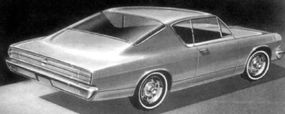
Abernethy thought George would never let him put a V-8 in the [Rambler] Classic. George did not believe the Ambassador should be bigger than the Classic, and he was against offering convertibles in the larger series. He also did not think a new V-8 was needed, but Abernethy decided to make a change.
The all-new Rambler Classic and Ambassador for 1963 had already been put to bed, and the tooling had been let for the all-new Rambler American that was due to follow for 1964. There was little Abernethy could do to change them, or to lengthen the Ambassador.
But there was 1965, and so Abernethy went to work. With support from chairman Richard E. Cross and the Board of Directors, he ordered major styling changes in all series, plus the addition of convertibles (for the first time) for the Classic and Ambassador.
The latter was also planned around a longer wheelbase to set it apart from the Classic and move it upmarket. Finally, he approved a change in the advertising theme, the goal being to pump a bit of pizazz into the AMC image. Thus, the entire lineup for 1965 ended up being known as "The Sensible Spectaculars" -- whatever that meant.
Richard A Teague's styling group got to work on developing a sporty fastback for AMC. Continue to the next page to learn about the development of the AMC Tarpon and Marlin models.
For more information on cars, see:
- Classic Cars
- Muscle Cars
- Sports Cars
- Consumer Guide New Car Search
- Consumer Guide Used Car Search
Advertisement

